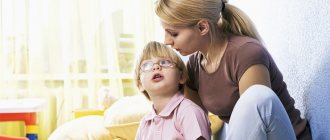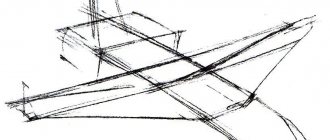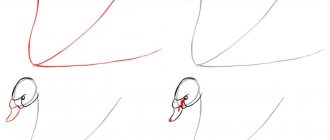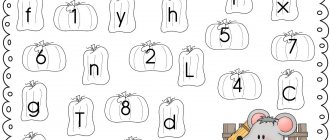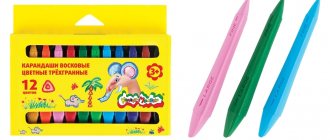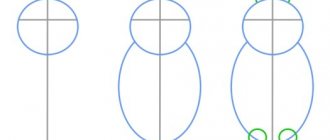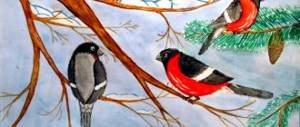Dancing for preschoolers: attributes, costumes, props
When composing a new dance, you need to take into account all the details. The stage costume plays a huge role. Further success in performing the dance depends on this element. The costume should reflect the nature of the dance. Therefore, the choice of this important element is carried out together with the artistic director. The dance costume consists of interesting accessories.
Dancing for preschoolers: basic details
These include:
- bow;
- headdress;
- handkerchief;
- flower.
Formation of cultural and hygienic skills in the preparatory group
For example, if a folk dance is being staged, then ethnographic material should be used. The result should be not only a cool and interesting image, but also a comfortable costume that does not restrict a new dance movement. In addition, the choreographer pays attention to the color scheme of the fabric, taking into account small details.
Simple dances for girls 3, 4 years old
Dancing for children 4 years old includes light, simple movements. The program is developed taking into account their age, social and physical capabilities. Choreography perfectly develops coordination, gives the body flexibility, and straightens posture. Dancing for preschoolers performs a developmental function. Baby can improve creative thinking and imagination. Physical training is very important for the development of the musculoskeletal system. With regular training, the child’s body is significantly strengthened.
At the first stage, the lesson for kids is conducted in a playful style, because children must get used to the environment, the choreographer, and their peers. The main task is to develop rhythm and ear for music. The teacher teaches simple connectives to prepare the child for classes for the older group. Any lesson starts with:
- gymnastics;
- rhythms;
- dance.
Note! Simple exercises include light jumps and side turns. All these movements are performed to the rhythm of the music.
Costume dancing for children 4 years old with movements
Costumed entertainment increases interest in music. Dancing for girls from 3 years old to the composition of the group “Ivan Kupala” fosters a love of folk music. In the course of actions, motor activity, attention, and rhythm develop.
Create a fun “bee costume” look for graduation. Together with the parents, flowers and flat mushrooms are made. The kindergarten is decorated with beautiful elements. The central wall is covered with the sun, clouds, flowers, a rainbow, a “house for bees.” The characters are a teacher (the role of a grandmother-DJ), children are bees.
Dancing for children 5 years old for different holidays
Role-playing dances in the middle and junior groups of kindergarten allow children to become characters from cartoons and fairy tales. This approach allows children to express themselves through movement, developing emotionally and spiritually.
Dancing for children aged 5 years, presented through play using the preschool method, will allow you to feel self-confident. They will learn to interact fruitfully with each other and enjoy collective creativity. As a result, interpersonal connections are strengthened and the ability to communicate is improved.
Fantasy game “Dream”
During the lesson, all the children perform jumps and other dance movements with the image of: beetles, grasshoppers, frogs, butterflies, moths. Based on involuntary observations of animal habits, children, together with the teacher, create plastic pictures in a playful way.
Note! The teacher chooses children, taking into account the wishes of the children.
If this game takes place outside of class, adults can quickly create improvised costumes with children, using ribbons to create mustaches, scarves to imitate wings. Having learned the whole performance, you can invite the children to show the result to the assembled adults, which will serve as a source of pride for the children.
Making crafts according to traffic rules in kindergarten with your own hands
Physical development
Children who dance regularly enjoy good health. Properly selected physical activity and activity contribute to:
- Strengthening all muscle groups;
- Formation of correct posture;
- Development of endurance;
- Improving the functioning of the heart and lungs, strengthening blood vessels;
- Development of coordination of movements, “muscle memory”;
- Development of flexibility and plasticity;
- Development of dexterity and speed of reaction.
Proper execution of dance movements requires considerable physical effort, but, unlike sports, dancing is practically harmless and has no contraindications.
How children dance in the garden funny dances for graduation
When sending a child to kindergarten, a parent should be aware that certain difficulties may arise. The most common problems are fatigue and absent-mindedness. After spending several years in kindergarten, you need to prepare for graduation. Staging a dance requires special attention and takes a lot of time.
How children perform funny movements during the holidays
Dancing for older and middle school children should be fun. You can choose an active musical game based on funny movements. A good option for a holiday is the “Dance of the Little Ducklings.” The children must pretend to be birds to the rhythm of the music. It will take more than one month to stage this dance.
Important! The duration of the show should not exceed 2-3 minutes. Otherwise, the guys may be overloaded with unnecessary information and get confused in the movements.
Very often, when children dance in kindergarten, they choose such directions as polka or cha-cha-cha. Children will be able to perform easy movements that are easy to master at any age. A good alternative would be the waltz. Little princesses will be happy to perform in front of their loved ones in beautiful dresses.
Little children dancing: funny performances at the holidays
When starting to work on dancing, you should take into account that children from 3 to 5 years old are very flexible. They can perform difficult jumps. However, fine motor skills can be difficult. The teacher can offer round dances, streams, combing.
You can stage funny performances based on cartoons. To make the holiday fun, you should think about a stage costume. Having chosen a musical composition for the dance, you will have to choose the appropriate outfit.
Important! A child in a certain costume should feel comfortable. Therefore, it is advisable to avoid wearing long dresses.
Fun dancing for preschool children in kindergarten
Funny children's dances at 4 and 5 years old are performed in preparatory groups for graduation. The most popular entertainment is "Flowers Bloom When the Sun Rises." As a rule, the sun warms the flowers by gently stroking them on the head. If you wish, you can invite a girl or boy, who will rejoice at the blooming of flowers and jump around.
Intellectual development
It may seem that active activities have little effect on children's intellectual development. But this is absolutely not true! Memorizing movements and their combinations perfectly trains the memory of preschoolers, and the need to constantly monitor the music, teacher and friends perfectly develops attention. Dance classes form spatial thinking, the baby quickly learns to perceive the concepts of “top”, “bottom”, “right”, “left”, “side”, “middle”, “above”, “under”, “in front”, “behind” and so on. To transform into the image necessary for the dance, the child actively uses his imagination. In general, intelligence is the ability to adapt to new conditions and learn quickly. During classes, children not only perform prepared dances, but also often improvise. By getting to know himself and the capabilities of his body, the baby creates a fundamental basis for new discoveries.
conclusions
When parents are faced with the choice of which section or club to send their child to, many choose dancing. And this is exactly what children of early and preschool age need. Dance classes make a great contribution to the physical, intellectual, personal, social and aesthetic development of the child. Children involved in dancing develop self-control skills, the ability to work in a team and collaborate with peers, and listen to the teacher. When going to school, the child will be psychologically prepared for new conditions.
Development of communication skills
Dance classes help children improve their communication skills. Kids usually make new acquaintances without difficulty, because the atmosphere that prevails at dances is conducive to close emotional communication. Even shy and unsociable children are liberated and quickly join the team. Basically, dancing is teamwork, so preschoolers develop a sense of trust in others, and also develop skills of interaction with other people, the ability to find a common language with peers. In choreography, children are taught to express their emotions through facial expressions and gestures, and this greatly helps them better understand how other people feel.
Communicative dances in preschool educational institutions as an innovative approach to teaching children
Communicative dance is a beneficial activity associated with solving the problem of mutual understanding between older preschoolers and their peers. When interacting with peers, social and moral development is formed.
Note! To perform communicative dance, special choreographic preparation is required. The components of communicative dance are simple: circling, stepping, running. While performing movements in space, the children listen to the elements of the musical structure.
As a rule, this method is used in various forms: at musical events, holidays, on weekdays. To learn the simplest actions, you do not need to spend a lot of time, since the same movements are repeated several times.
For classes to be effective, it is important that the teacher pays attention to the development of the child’s endurance, flexibility and physical strength, coordination, discipline and musicality. Since children dance in sports ballroom dancing in pairs, this gradually teaches them mutual respect and develops communication skills. It is very important that a ballroom dance teacher understands that he is working with children. The development and formation of the child’s character as a future dancer and his self-esteem will depend on his approach to work.
Important! Timely support and the ability to find an approach to a shy child will be a big plus for the teacher. And by putting pressure on a child and emphasizing his shortcomings, you can easily instill in him insecurity.
How to teach a child to dance at home
Many parents often wonder how to properly teach their child to dance at home and in kindergarten. Parents do not need to be at home all day and conduct scheduled activities with their baby. The beauty of home dancing is that you can practice it at any time. When kids listen to a rhythmic song on the radio, they spontaneously start dancing to it. Therefore, it is very important to decide on the choice of musical material that stimulates the child’s desire to dance. You should observe the baby’s reaction to individual songs: some compositions will make him sad, while others will lift him out of his seat and make him dance.
How to teach your baby to dance at home
Light movements
The process of teaching a child to dance should be exciting, presented in a playful way. You can start with improvisations, for example, it is recommended to turn on music, perform movements and invite the baby. Already at this stage, it is possible to assess the general potential of the preschooler, as well as the degree of his enthusiasm and sense of rhythm. You can gradually learn easy dance moves at home:
- turns;
- jumping;
- Steps;
- clapping hands;
- floods;
- rocking from side to side.
What is aesthetic education?
Development of personal qualities
Listening to music makes a great contribution to the development of a child’s personality, including his emotional sphere, because it contains many experiences, emotions, feelings, and events. Thanks to dancing, children recognize themselves and become well oriented in their inner world. In addition, children develop such qualities as:
- Artistry;
- Creativity;
- Public speaking skills;
- Activity;
- Self confidence;
- Self-control;
- Discipline;
- Determination;
- Persistence.
